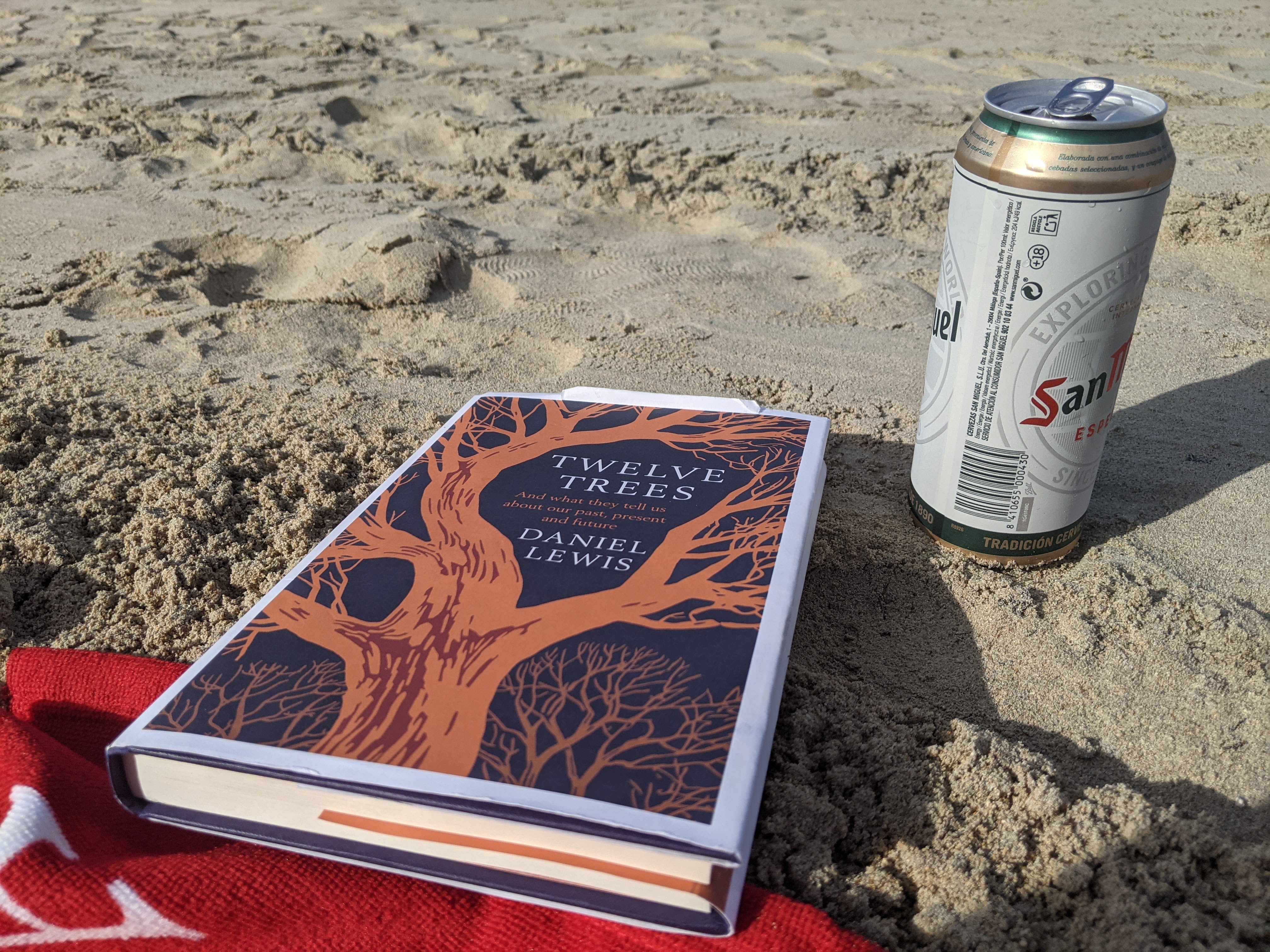Twleve Trees
25 Sept 2024 - Palma de Mallorca
Daniel Lewis' Twleve Trees was a delightful jaunt through the plant kingdom and its relation to humanity where I met some old friends and made some new ones.

Pinus longeava - Better know as the bristlecone pine is know for its ability to live for thousands of years while being so very short. With a range across California, Nevada and Utah I've probably encountered it, although I don't remember a particular occurance.
Sequoia sempervirens - With Lewis' second choice of the California coastal redwood, we start to see the author's bias toward his adopted home state. I don't particularly mind though, because as I boy my family also moved there and I discovered these giants in Muir Woods. I took my own young family back there many times I with the younger two camped many places among them. My last encounter with them in their natural habitat was just before covid when I ran a race that partially went through their cloud forest in the coastal mountains, but there's also an imported grove in hills above Heidelberg. And I am certain that I will see them again.
Sophora toromiro - A native of Easter Island, this species has an interesting story of how it survived when most others didn't which Lewis recounts.
Hymenaea protera - I was excited to learn that this prehistoric tree was the source of much of the resin which became amber, including huge deposits in the Dominican Republic.
Pinus palustris - I am not as familiar with the southern longleaf pine as I am with the loblolly pine, which were just everwhere growing up in Georgia. They grow fast and are good for lumber and some crash down destroying things in every ice storm. The longleaf pine, on the other hand, was once everywhere in the south but is now sparcer. Lewis uses it's dependence on fire to discuss that important aspect of the forest ecosystem.
Santalum album - This is a very valuable, highly regulated tree in southeast asia that Lewis uses to discuss how regulations can hurt a species' chances.
Diospyros crassiflora - The ebony tree inhabits the African jungles and allowed Lewis to discuss conservation further.
Eucalyptus globulus - Once again Lewis shows his California focus with this popular transplant from Australia. I remember the smell of them on the hills driving over to Half Moon Bay as a kid. I last saw them being farmed in Spain. Lewis uses them to come back to the topic of fire.
Olea europaea - Humanity has been using olives longer than writing. Travelling through the American west I often wonder how it would look with olive trees on the hills if Mediterraneans had settled it instead of northern Europeans. It's so sad to see all the water in tiny valleys used to fertilize a small patch of grass for a few cows when it could support hillsides filled with olive trees. At least they've started group grapevines for wines in Colorado.
Adansonia digitata - The baobob is a native of African known for its extremely stout trunks with hollow centers. Lewis pits conservation of the tree vs. conservation of the elephant. When elephants experience water stress they attack the trees to get at the water in their trunks, often destroying the trees but keeping the elephants alive.
Taxodium districhum - This tree inhabits wetlands through the southern United States and Lewis uses them to discuss conserving wetlands using the trees, who can spend their entire lives with fully submerged roots.
Ceiba pentandra - The final tree Lewis discusses is another of the largest in the world and native to Latin America and West Africa, but cultivated all over the world.
